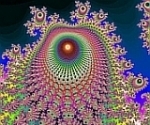Oximeter
-
jeepdoctor
- Posts: 173
- Joined: Sun Jul 09, 2006 5:23 pm
- Location: "Green Country" Northeastern OK
Oximeter
I am intrigued by this oximeter that Turner Medical is selling. $ 500 including the software seems like a great price.
http://www.turnermedical.com/SPO_PulseO ... imeter.htm
Does anyone on the forum have experience with this product?
Are there any product evaluations on the web that anyone knows of?
Does the purchase of an oximeter require a prescription?
What is the procedure for receiving an insurance reimbursement for an oximeter?
http://www.turnermedical.com/SPO_PulseO ... imeter.htm
Does anyone on the forum have experience with this product?
Are there any product evaluations on the web that anyone knows of?
Does the purchase of an oximeter require a prescription?
What is the procedure for receiving an insurance reimbursement for an oximeter?
VERY INTERESTING!
That looks like a fairly new product, here is their press release from June 29:
http://www.spomedical.com/SPO_7500Launch062906FINAL.pdf
In general no prescription is required for purchasing an oximeter. If you want somebody else to pay for it, that is a different issue, insurance may want a letter/certificate of need. Oximeters are used by aviators, mountain climbers, distance runners, and a whole lot of other people who don't use them for pre-existing medical problems. Oximeters are widely available. (check eBay, tons of them for sale).
The SPO 7500 looks particularly interesting in that it doesn't require a wire going to some equipment that might get tangled up during sleep. AND it records the data and plays it back to a computer. Assuming it is accurate and reliable, I see this catching on. I don't plan to discard my NPB-290 or the N-395 or the N200 which I got on eBay for less than $30 ea. (and a little luck). Those represent older generation technology, and are usually hand-me-downs from hospitals or clinics that have long-since upgraded, but they make great hobby toys.
The 7500 looks like it might be the long-sought "one-wire sleep study" that has been occasionally discussed. Make that "NO-WIRE sleep study". Granted, it's nowhere near as much data as a real SS, but it might be a useful first-pass screening device. Oh-two saturation has a sort of bottom-linish feel about it. I could see owning an SPO 7500.
Thanks Jeepdoctor for the heads up!
-Ric
That looks like a fairly new product, here is their press release from June 29:
http://www.spomedical.com/SPO_7500Launch062906FINAL.pdf
In general no prescription is required for purchasing an oximeter. If you want somebody else to pay for it, that is a different issue, insurance may want a letter/certificate of need. Oximeters are used by aviators, mountain climbers, distance runners, and a whole lot of other people who don't use them for pre-existing medical problems. Oximeters are widely available. (check eBay, tons of them for sale).
The SPO 7500 looks particularly interesting in that it doesn't require a wire going to some equipment that might get tangled up during sleep. AND it records the data and plays it back to a computer. Assuming it is accurate and reliable, I see this catching on. I don't plan to discard my NPB-290 or the N-395 or the N200 which I got on eBay for less than $30 ea. (and a little luck). Those represent older generation technology, and are usually hand-me-downs from hospitals or clinics that have long-since upgraded, but they make great hobby toys.
The 7500 looks like it might be the long-sought "one-wire sleep study" that has been occasionally discussed. Make that "NO-WIRE sleep study". Granted, it's nowhere near as much data as a real SS, but it might be a useful first-pass screening device. Oh-two saturation has a sort of bottom-linish feel about it. I could see owning an SPO 7500.
Thanks Jeepdoctor for the heads up!
-Ric
He who dies with the most masks wins.
I agree with Ric, this looks like a very useful device. The price would put me off though (unless it is covered by health insurance )
I like the comments they make at their web site. Seems to me these are people who are seeking to listen to what us consumers want.
DSM
I like the comments they make at their web site. Seems to me these are people who are seeking to listen to what us consumers want.
DSM
xPAP and Quattro std mask (plus a pad-a-cheek anti-leak strap)
- NightHawkeye
- Posts: 2431
- Joined: Thu Dec 29, 2005 11:55 am
- Location: Iowa - The Hawkeye State
Did anyone find out how much memory this device has and how long it can record data for? All the example charts I saw contained only a few minutes of data. I couldn't find anything at all more specific. I'm not sure what good having only a few minutes of data would be, I don't understand why all their examples are limited to just a few minutes of data. Also, if it has so little memory that the data points have to be spread out thinly to cover a full night's sleep, then it becomes essentially useless as well.
Looks like a neat device if it can record a full night's worth of data taking samples every few seconds.
Regards,
Bill
Looks like a neat device if it can record a full night's worth of data taking samples every few seconds.
Regards,
Bill
- MandoJohnny
- Posts: 305
- Joined: Sun Apr 23, 2006 11:23 am
- Location: St Louis, Missouri
Pulse/Ox
I believe that an accetable level of oxygen saturation is >89%.
If yours is consistently below that (with xPAP), your sleep doc is going to discuss with you adding supplemental oxygen to your therapy, usually in the form of an oxygen concentrator, which is like sleeping next to a pneumatic asphalt jack-hammer.
If yours is consistently below that (with xPAP), your sleep doc is going to discuss with you adding supplemental oxygen to your therapy, usually in the form of an oxygen concentrator, which is like sleeping next to a pneumatic asphalt jack-hammer.
People are dying every day in Darfur simply for who they are!!! PLEASE HELP THEM!
http://www.savedarfur.org
_______________________________
http://www.savedarfur.org
_______________________________
-
jeepdoctor
- Posts: 173
- Joined: Sun Jul 09, 2006 5:23 pm
- Location: "Green Country" Northeastern OK
I talked to our vetrinarian about oxygen desaturation. He said that saturations of 85% or less will produce heart enlargement. There was an article that said about the same thing on yesterday's CPAP Talk news summary.
People docs tend to use 88, 89 or 90% as the desaturation cutoff, depending on who you talk to.
People docs tend to use 88, 89 or 90% as the desaturation cutoff, depending on who you talk to.
In addition to measuring the degree of desaturation, it would also be of interest to observe dips in the curve, which would indicate specific events that would presumably also show up on the data from MyEncore. This would give additional meaning to understanding which OAs and hypopneas are significant, and which can be safely ignored. Much interest is focused on the all-important AHI, which I think is over-rated. Having the saturation curve would help sort out what is important and what is not.MandoJohnny wrote:How would you actually use the data as an XPAP user?
What I think is MORE interesting about having one of these would be the prospect of screening individuals, (family members, friends) who are unaware of a problem, or in denial. Having a very simple method (no wires, no geeky medical-looking hardware) could raise the awareness that maybe there really IS a problem. There is a special problem about sleep apnea in that it usually occurs when one is asleep. (well D'UHHHHHHHHHHH, do I get a gold star?) Seems obvious, but that is why it can go for years unrecognized, and then only when it begins to cause other severe health problems. What the world needs is a very simple (cheap?) easy-to-use method for screening the general population. A sleep study will NEVER be a primary screening tool owing to the expense and time and effort. Oximetry seems like a very good candidate for that.
$500 seems like a lot for a new toy that might sit on the shelf after a few days. But as a screening tool that will be shared amongst a large number of individuals, that is very affordable. Every doctor's office should have a few dozen laying around and send them home with their patients for an overnight screening as part of a routine physical exam. It couldn't cost more than a few bucks if amortized properly; a fraction of the cost of, say, CBC, urinalysis, EKG, etc. I think this "toy" has potential.
-Ric
He who dies with the most masks wins.
[quote="jeepdoctor"]I talked to our vetrinarian about oxygen desaturation. He said that saturations of 85% or less will produce heart enlargement. There was an article that said about the same thing on yesterday's CPAP Talk news summary.
People docs tend to use 88, 89 or 90% as the desaturation cutoff, depending on who you talk to.
People docs tend to use 88, 89 or 90% as the desaturation cutoff, depending on who you talk to.
Use data to optimize your xPAP treatment!
"The art of medicine consists in amusing the patient while nature cures the disease." Voltaire
"The art of medicine consists in amusing the patient while nature cures the disease." Voltaire
- rested gal
- Posts: 12881
- Joined: Thu Sep 09, 2004 10:14 pm
- Location: Tennessee
Excellent points, Ric!Ric wrote:What I think is MORE interesting about having one of these would be the prospect of screening individuals, (family members, friends) who are unaware of a problem, or in denial. Having a very simple method (no wires, no geeky medical-looking hardware) could raise the awareness that maybe there really IS a problem.
---
A sleep study will NEVER be a primary screening tool owing to the expense and time and effort. Oximetry seems like a very good candidate for that.
---
$500 seems like a lot for a new toy that might sit on the shelf after a few days. But as a screening tool that will be shared amongst a large number of individuals, that is very affordable. Every doctor's office should have a few dozen laying around and send them home with their patients for an overnight screening as part of a routine physical exam. It couldn't cost more than a few bucks if amortized properly; a fraction of the cost of, say, CBC, urinalysis, EKG, etc. I think this "toy" has potential.
-Ric
Below 90% saturation is considered "bad" .
This looks like a winner, except its VERY odd that they don't say sampling rate, or how much memory/time you can record.
$30 for a Nellcor N-395????? How the heck did you pull that one off???
They usually go USED for $300.
A RECORDING pulse ox is more than a little handy. i use it often as I dial-in my treatment. In fact at the moment, it is the ONLY equipment by my bedside as I optimisically put ALL my CPAP stuff into what I can only hope will be long term storage today, since my TAP titanium seems to be working out really well so far. Which I have confirmed with the pulse ox showing me I am maintaining about an average of 95-97%, and never dipping below 92% so far. But I am looking for a long term trend and the pulse ox is critical for that. THEN after a number of months I can get a pricey sleep study to confirm the results. And just my deductible for the sleep study will cost more than OWNING a used N-395 pulse ox
This looks like a winner, except its VERY odd that they don't say sampling rate, or how much memory/time you can record.
$30 for a Nellcor N-395????? How the heck did you pull that one off???
They usually go USED for $300.
A RECORDING pulse ox is more than a little handy. i use it often as I dial-in my treatment. In fact at the moment, it is the ONLY equipment by my bedside as I optimisically put ALL my CPAP stuff into what I can only hope will be long term storage today, since my TAP titanium seems to be working out really well so far. Which I have confirmed with the pulse ox showing me I am maintaining about an average of 95-97%, and never dipping below 92% so far. But I am looking for a long term trend and the pulse ox is critical for that. THEN after a number of months I can get a pricey sleep study to confirm the results. And just my deductible for the sleep study will cost more than OWNING a used N-395 pulse ox
Remember:
What you read above is only one data point based on one person's opinion.
I am not a doctor, nor do I even play one on TV.
Your mileage may vary.
Follow ANY advice or opinions at your own risk.
Not everything you read is true.
What you read above is only one data point based on one person's opinion.
I am not a doctor, nor do I even play one on TV.
Your mileage may vary.
Follow ANY advice or opinions at your own risk.
Not everything you read is true.
Pulse/Ox
I also just acquired a Nellcor N-395 and I find it to be ENORMOUSLY useful. After all, sleep-disordered breathing, complex sleep disordered breathing, upper airway patency, air splinting, AHI, HI, AI, leak, pressure and the like are ALL intervening variables. What matters is how much O2 is getting into your blood and to your organs. Degradations of that simple fact account for a host ofphysiological problems INCLUDING fragmentation of sleep and our clinical sense of being well-rested.
My Nellcor measures how much oxygen is getting into my blood and it does so for thousands and thousands of data points over a 48 hour period. I'm finding fascinating stuff with it.
More later.
Chuck
My Nellcor measures how much oxygen is getting into my blood and it does so for thousands and thousands of data points over a 48 hour period. I'm finding fascinating stuff with it.
More later.
Chuck
People are dying every day in Darfur simply for who they are!!! PLEASE HELP THEM!
http://www.savedarfur.org
_______________________________
http://www.savedarfur.org
_______________________________
That's right Chuck. The pulse ox is far more than a toy and is a useful medical instrument that defines how well the xPAP is delivering therapy and delivers far more useful information than the AHI and AI. You could conceivably have an AHI below 5.0 and still be suffering with poor results from the xPAP that you would never know without correlating the SaO2 data. As Chuck says, the idea is to keep sufficient O2 supplied to the vital organs, including the brain.
Low SAO2 results means the heart muscle is forced to compensate and, if they are low for an extended period of time, will result in medical complications over time.
Low SAO2 results means the heart muscle is forced to compensate and, if they are low for an extended period of time, will result in medical complications over time.
One other result the sleep docs are looking for is how many times during the night does the SaO2 drop by four points or more from the preceding reading. I'm not sure what the significance of this is, but my sleep doc says she closely watches this. I'm doing a study now and I'll ask her when I go back what the significance of this is.
- NightHawkeye
- Posts: 2431
- Joined: Thu Dec 29, 2005 11:55 am
- Location: Iowa - The Hawkeye State
The significance is that it correlates with breathing obstructions, and allows determination of whether hypopneas are significant. Apneas can easily be determined without an oximeter because of the lack of breathing. Hypopneas however, which are a reduction in breathing, cannot be. Many/most cases of reduced breathing are simply normal events without any adverse effects. Oximetry results easily allow observation of destructive hypopneas.Paul B wrote:One other result the sleep docs are looking for is how many times during the night does the SaO2 drop by four points or more from the preceding reading. I'm not sure what the significance of this is . . .
Regards,
Bill















